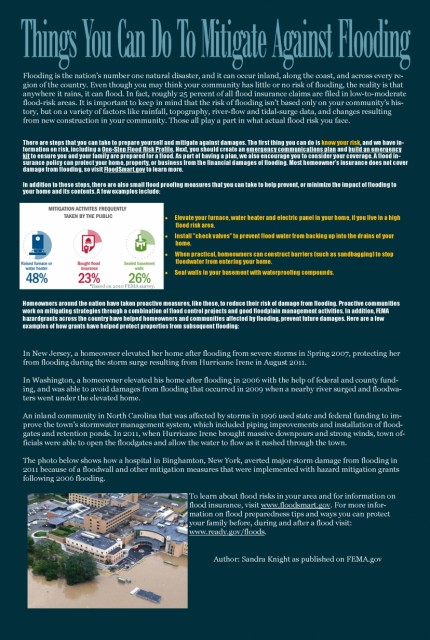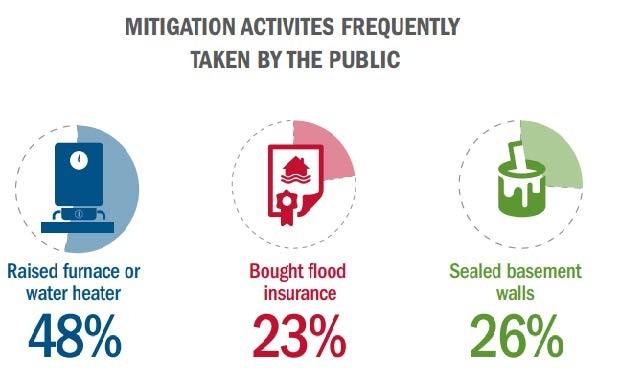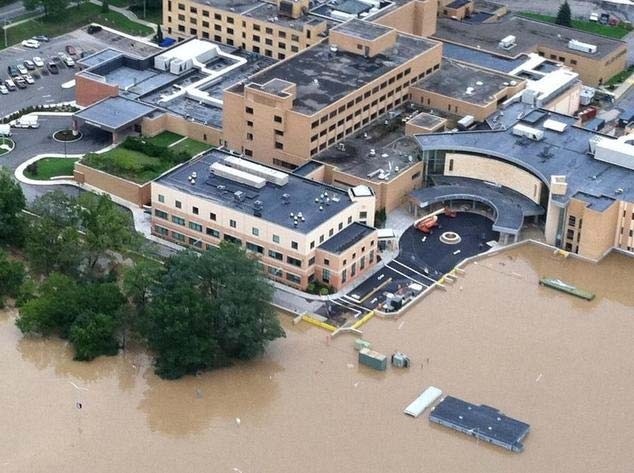Things You Can Do To Mitigate Against Flooding
Enter your text here ...
In addition to these steps, there are also small flood proofing measures that you can take to help prevent, or minimize the impact of flooding to your home and its contents. A few examples include:~ Install "check valves" to prevent flood water from backing up into the drains of your home.
~ When practical, homeowners can construct barriers (such as sandbagging) to stop floodwater from entering your home.
~ Seal walls in your basement with waterproofing compounds.
Homeowners around the nation have taken proactive measures, like these, to reduce their risk of damage from flooding. Proactive communities work on mitigating strategies through a combination of flood control projects and good floodplain management activities. In addition, FEMA hazard grants across the country have helped homeowners and communities affected by flooding, prevent future damages. Here are a few
examples of how grants have helped protect properties from subsequent flooding:
In New Jersey, a homeowner elevated her home after flooding from severe storms in Spring 2007, protecting her from flooding during the storm surge resulting from Hurricane Irene in August 2011.
In Washington, a homeowner elevated his home after flooding in 2006 with the help of federal and county funding, and was able to avoid damages from flooding that occurred in 2009 when a nearby river surged and floodwaters went under the elevated home.
An inland community in North Carolina that was affected by storms in 1996 used state and federal funding to improve the town's stormwater management system, which included piping improvements and installation of floodgates and retention ponds. In 2011, when Hurricane Irene brought massive downpours and strong winds, town officials were able to open the floodgates and allow the water to flow as it rushed through the town.
The photo below shows how a hospital in Binghamton, New York, averted major storm damage from flooding in 2011 because of a floodwall and other mitigation measures that were implemented with hazard mitigation grants following 2006 flooding.



